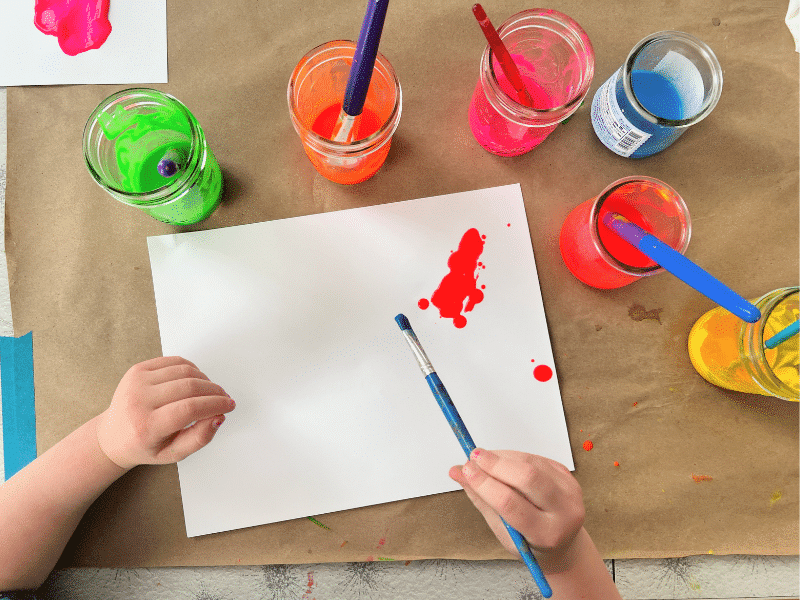Daftar Isi

Active Games for Kids: 7 Fun Ideas
The world of childhood is filled with boundless energy and a desire for exploration. For many parents, the challenge lies in finding engaging activities that nurture a child’s development while keeping them entertained. Active games for kids are precisely that – opportunities for physical activity, imaginative play, and social interaction, all wrapped up in a fun and rewarding experience. It’s more than just a fleeting trend; it’s a vital component of a child’s overall well-being. This article will explore seven fantastic ideas for active games that will keep your little ones happy and healthy, fostering creativity, coordination, and a love for movement. Let’s dive in!
Why Active Games are Essential
Before we jump into the games themselves, it’s important to understand why active games are so beneficial. Children’s development isn’t solely about academic achievement; it’s deeply intertwined with physical health. Regular physical activity helps build strong bones and muscles, improves cardiovascular health, reduces the risk of obesity, and boosts mood. Furthermore, active games encourage problem-solving, critical thinking, and social skills – all crucial for a well-rounded child. Simply put, incorporating more movement into a child’s daily routine is a powerful investment in their future. Ignoring this need can lead to sedentary lifestyles and potential health issues down the line.
1. Obstacle Course Challenge
Creating an obstacle course is a fantastic way to get kids moving and working together. You can adapt this to your home or backyard, using pillows, blankets, chairs, tunnels, and anything else you have on hand. Start with simple challenges like crawling under a table, hopping over pillows, and balancing on a line. Gradually increase the difficulty by adding more obstacles and requiring them to work as a team. Active games for kids really come alive when you involve them in the design and execution. It’s a fantastic way to encourage spatial reasoning and coordination. Don’t forget to add a “treasure hunt” element – hiding small toys along the course for them to find!
2. Backyard Scavenger Hunt
A classic for a reason! A scavenger hunt is a simple yet engaging way to get kids exploring their surroundings. Create a list of items for them to find – a specific type of leaf, a smooth stone, a red flower, a feather, etc. The difficulty can be adjusted based on the child’s age. This encourages observation skills, following directions, and a sense of adventure. Make it a race against the clock to add excitement! Active games for kids are intrinsically linked to exploration and discovery.
3. Dance Party Extravaganza
Music is a powerful motivator! Put on some upbeat music and let loose with a dance party. Encourage your child to move freely, mimicking their favorite songs and rhythms. You can even incorporate simple dance moves and games like freeze dance or follow-the-leader. This isn’t just about having fun; it’s a fantastic way to improve coordination, rhythm, and self-expression. It’s also a great opportunity to get them moving and burn off some energy. Active games for kids are a joyful and energetic way to release pent-up energy.
4. Building Blocks Bonanza
Building blocks – LEGOs, Duplo, wooden blocks – are a timeless favorite for a reason. Let your child build towers, houses, vehicles, or anything else they can imagine. This encourages spatial reasoning, problem-solving, and fine motor skills. You can also introduce simple building challenges, like building a bridge that can hold a toy car. It’s a fantastic way to foster creativity and a sense of accomplishment. Active games for kids are a great way to develop spatial awareness and hand-eye coordination.
5. Simon Says & Follow the Leader
These classic games are simple to play and incredibly effective for developing gross motor skills. “Simon Says” requires children to follow instructions, while “Follow the Leader” encourages them to mimic your movements. This promotes coordination, balance, and listening skills. It’s a fantastic way to build confidence and encourage participation. Active games for kids are a great way to build foundational movement skills.
6. Red Light, Green Light**
A simple game of “Red Light, Green Light” is a fantastic way to improve listening skills, reaction time, and impulse control. One person is “Red Light,” and the other is “Green Light.” When “Red Light” calls out “Green Light,” the child must freeze. If they move, they are “Red Light.” This game is adaptable for different ages and can be played indoors or outdoors. It’s a great way to teach children about following rules and respecting boundaries. Active games for kids are a great way to build impulse control and reaction time.
7. Balloon Toss
A classic game that’s always a hit! Set up a target (a bucket, a hula hoop, or even just a designated area) and have your child toss a balloon back and forth. This encourages hand-eye coordination, throwing skills, and social interaction. It’s a fun and engaging way to get kids moving and practicing their throwing technique. Active games for kids are a great way to improve hand-eye coordination and gross motor skills.
Conclusion
Active games for kids are far more than just entertainment; they are essential for promoting physical and mental well-being. By incorporating a variety of these games into your child’s routine, you’re not just having fun – you’re investing in their future health, development, and happiness. Remember to tailor the games to your child’s age, interests, and abilities. Encourage participation, celebrate their successes, and most importantly, make it a joyful and memorable experience. Don’t underestimate the power of movement – it’s a fundamental part of a healthy and happy childhood. As you continue to explore these ideas, remember to always prioritize safety and adapt the games to suit your child’s individual needs. By embracing active play, you’re setting the stage for a lifetime of healthy habits and boundless energy.
]]>